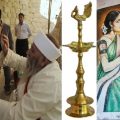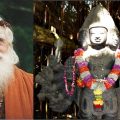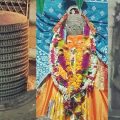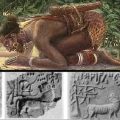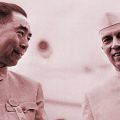Hindus and Yezidis One United Family Part II: The Universal Shaivite Culture
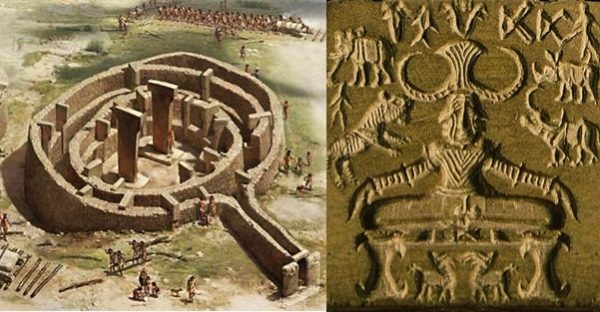
In Part I of this article I revealed many of the outstanding features that the Yezidi and Hindu cultures share, including the veneration of the same deity known as Tawsi Melek, the “Peacock Angel,” by the Yezidis and Murugan or Karttikeya by the Hindus, as well as the belief in reincarnation, the sacred anointing at the Third Eye, etc.
In Part II of this article I will introduce an ancient culture that expanded across Asia, Europe and Africa that both the Hindus and Yezidis were a part of. This culture evolved out of the primeval Goddess Culture of the Neolithic Age that featured the Earth Goddess and Her Son, the Green Man, who was annually born as all the new forms of nature in the Spring and then died with the falling leaves and rotting plants each Autumn. Observation of the seven stars of the Pleiades was also part of this early Nature Religion, with their rise in the Spring and their descent in Autumn corresponding closely to the life cycle of the Green Man.
Moving ahead in time to a more recent era, we find that the Green Man has been given horns and made to be intimately associated with the virile bull. The Pleiades has also acquired bovine associations and become part of the Zodiacal sign of the Bull Son, Taurus. A new complete culture, known as the Bull Cult or Primeval Shaivite Tradition (my name for it), has emerged. This universal culture succeeded in uniting not only the Hindus and Yezidis, but also the Babylonians, Greeks, Egyptians, Celts, Persians, Anatolians and more. Below are some features of the Bull Cult that were once shared by the indigenous people in many parts of the globe. How each of these elements was integrated by the member countries of this cult will be covered in detail.
1. The Goddess and Her Bull/Horned Son
2. The Pleiades and the Zodiac sign of Taurus the Bull
3. Veneration of the Shiva Lingam; Temples made in the shape of lingams
4. Yoga and Meditation
5. Sacrifice of the Bull Son
6. Holy Communion of red wine & bull meat
7. Veneration of the Swastika.
1. The Goddess and Her Bull/Horned Son
In Asia, Europe and Africa the Bull Son was ubiquitous during the era of the Bull Cult and known variously as Marduk (Babylonia), Zagreus-Dionysus (Greece), Ptah-Osiris (Egypt) and the horned Pashupati, the “Lord of the Animals,” of the Indus Valley Civilization of India.
Pashupati has been called an early form of Lord Shiva, but he could also be a manifestation of Shiva’s Son, Murugan, if he truly is an evolution of the Green Man that he appears to be. Murugan’s role as the Green Man is both ancient and contemporary. At Kataragama on Sri Lanka Murugan’s venerated images currently include al-Khadir, the “Green Man.”
And in ancient times, when the soldiers of Alexander the Great beheld the Sri Lankan Murugan they identified him as their Green Man, Dionysus. When these soldiers later returned to their native Greece they communicated this truth to Ptolemy, the world’s first map maker, who then referred to Kataragama on his maps as Bachi oppidum, the “Land of Bacchus (i.e., Dionysus).”
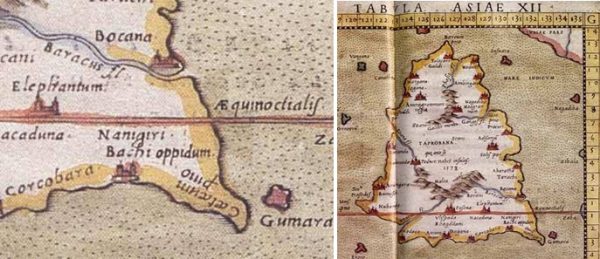
Special Note: In regards to the spreading of the Bull Cult across Asia, it is important to recognize that Ptah-Osiris and Pashupati-Shiva-Murugan possess so many similarities in their respective characters that the missionaries of the Bull Cult must have either taken the image and rites of Ptah-Osiris to India, or those of Pashupati-Shiva-Murugan to Egypt. Or perhaps both lines of influence were in operation. In apparent confirmation of this truth the Roman historian Plutarch quotes the legend of Osiris, whom he maintains completely encircled the world while spreading the rites involved with sacred worship. Moreover, the Greek historians were adamant that Osiris’ counterpart Dionysus carried the sacred rites from his native Greece to Nyssa in India.
In regards to their numerous similarities: In Egypt, Ptah-Osiris was both the Green Man as well as the Lord of Fire, just as Shiva-Murugan-Pashupati assumed those roles in India. Ptah-Osiris was the spirit that incarnated as the sacred Apis Bull, a characteristic that reflected Shiva’s special relationship with his bull mount, Nandi. And the consorts of Ptah-Osiris and Shiva-Murugan-Pasupati also reveal their special connection. The wife of Ptah was Sekhmet, meaning the “Power,” and Shiva’s consort was Shakti, a name that is also translated as “Power.”
2. The Pleiades and the Zodiac sign of Taurus the Bull
Within all those countries where astronomy and astrology were practiced during the Bull Cult, the Pleiades was included in the celestial bull as its hump and the Seven Sisters thereby became part of the Zodiacal sign of Taurus. In this cosmic position the Pleiades were said to be the Goddess who gave birth to – or emanated – Her Son, the Bull Taurus. Or it was also said that the Seven Sisters were the Nurse Maids of the Bull Son. Or that the Pleiades by itself was an asterism that represented the Bull Son.
In India, the Pleiades were both the Krittikas, the nurse maids of Murugan, as well as Karttikeya himself. The name Krittika denotes “Sword of Fire” and thus associates the Pleiades with Murugan-Karttikeya, the fiery celestial warrior – a truth that is confirmed by another name of the Pleiades, Kartika or Kartik – which is a shortened a version of the name Karttikeya. As Karttikeya, Murugan is often represented with six heads that, among their many associations, represent the six visible stars of the Pleiades asterism.
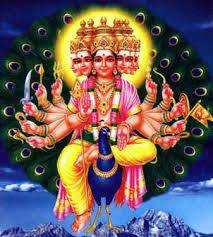
Six Headed Karttikeya
Murugan’s Greek counterpart, Dionysus, was also intimately associated with the Seven Sisters, who were identified as the seven nurse maids of Dionysus. As Zagreus, Dionysus’ followers on Earth regularly feted and honored their deity as the Greece and Cretan manifestation of the Bull Son.
On Crete, just as it was the custom in other countries of the Bull Cult, such as Babylonia and Persia, the ruling priest king was recognized to be an incarnation of the Bull Son. Above his Cretan throne rested the two headed battle axe, or labyrs, symbol of the king’s mother, the Goddess, under whose authority the monarch ruled. The Cretan king was descended from an ancient lineage of Bull Son monarchs who had arrived on Crete from Anatolia, the country whose manifestation of the Bull Cult was thriving as early as 6000 BCE.
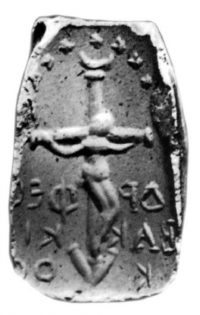
Dionysus with the 7 Pleiades overhead
The Bull Cult of Persia featured Mithra, the Warrior Son who was the Persian counterpart of Karttikeya and Dionysus. When his cult traveled west to the Middle East Mithra became Mithras, a hero who was intimately associated with the bull. He was the bull’s sacrificer, even though in his past Mithra had himself possessed many bovine associations. Mithriasm, which was intimately tied to astrology, associated the sacrificial bull with Taurus, the Celestial Bull, and Mithras with the constellation of the Hunter, Orion.
It was believed that at certain times of the year the cosmic Mithras would sacrifice the celestial bull and release its life force power to help further create and feed the physical universe. Meanwhile, during this time on Earth, a physical bull was sacrificed in the temples of Mithras so its divine and purifying blood and enriching life force power could shower down upon those candidates seeking initiation into the sect.
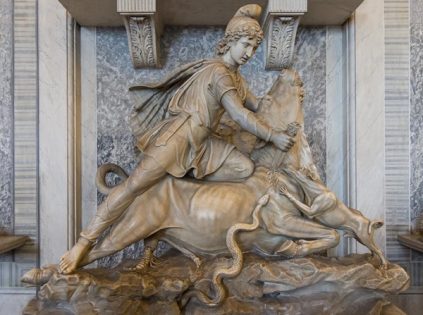
The association with the bull and the Pleiades was also known among the Yezidis, who during their Autumn Festival – when the Pleiades were directly overhead in the night sky – sacrificed specially selected bulls. Another reason they honored the appearance of the Seven Sisters with special rites at this time was because it was also the court of their primary deity, the Peacock Angel, who thus also had a special association with both the Seven Sisters and the Bull Son.
3. Veneration of the Shiva Lingam; Temples made in the shape of lingams
One form associated with the Bull Son of the Bull Cult was the Shiva Lingam, the sacred symbol that unites the phallus, the universal symbol of the male principle, with the ovum, the universal symbol of the female principle. The union of this polarity generates abundant life, which in many parts of the world was personified as the Green Man or Bull Son.
The association made by the priests of the Bull Cult between the bull and the lingam is very ancient, which is why wherever one finds the lingam in India today the image of the bull is always close by.
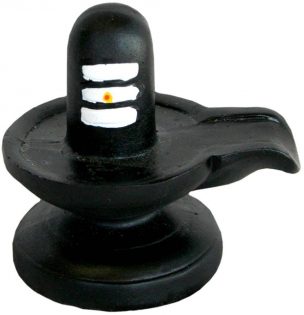
A Shiva Lingam
Some of the first lingams were those created naturally by nature, such as the many lingams formed by the Narmada River of India. The greatest of these lingams were mountains that took the forms of lingams, including Mount Kailash in Tibet and Arunachala Mountain in Tiruvannamalai, India. These are special places where great power is generated in the form of life force that can be used for spiritual transformation.
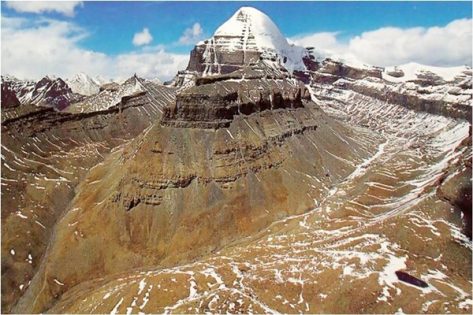
The Lingam of Mount Kailash
In order to generate the power of the lingam in and around their sacred enclosures, the members of the Bull Cult designed many of their temples in the form of lingams. This lingam architecture could be found among the Hindus, the Yezidis, the Babylonians, and the Celts.
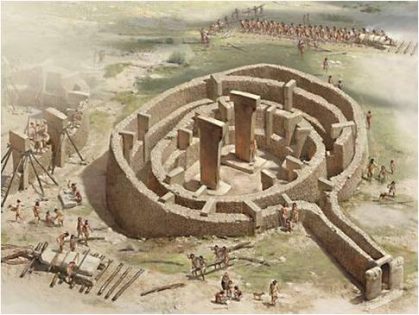
The lingam temple of Gobekli Tepe, an ancient home of the Yezidis in south Turkey
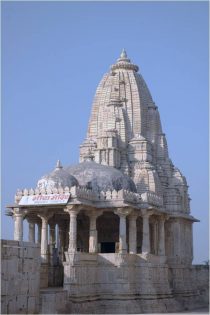
A typical lingam-shaped temple of India
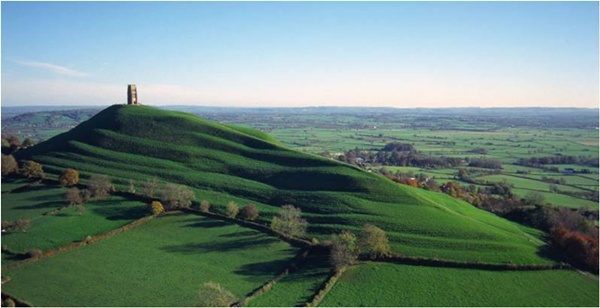
The lingam shape of England’s Glastonbury Tor
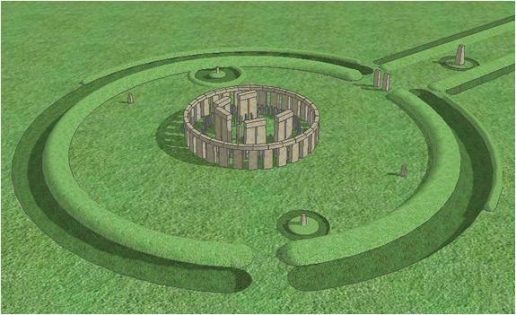
Stonehenge is built in the shape of a lingam
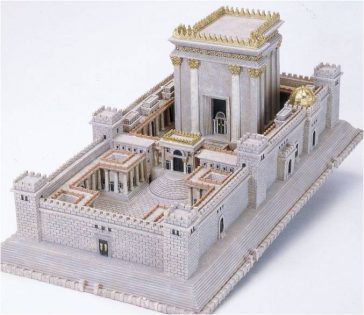
Solomon’s Temple had a lingam shape
Many of the priests of the Bull Cult were aware that all stars and star clusters are lingams – a truth that can be proven through Sacred Geometry. This is why they generate immense cosmic power in the heavens. This is especially true of the Pleiades, which as mentioned is associated with the Bull Son and his symbol, the Shiva Lingam. The power of the Seven Sisters both creates and feeds our Earth and Milky Way Galaxy.
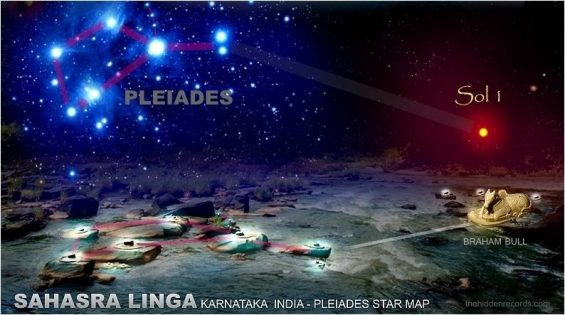
A vestige of the Bull Cult can be found at Sahasralinga in Karnataka, India where the Pleiades is represented as 7 rock-carved lingams placed strategically in the shape of the Seven Sisters. Nandi, the sacred bull, sits directly across the river from this Pleiadian configuration, thus indicating that the Hindu Rishis knew that Pleiades is indeed a Shiva Lingam. Art taken from: www.thehiddenrecords.com.
4. Yoga and Meditation
Yoga and Meditation were commonly practiced among the member countries of the Bull Cult. It was apparently observed in the Indus Valley, the place where the Rig Veda refers to the settlements of Yogis and where icons of Pashupati have him sitting in yoga posture. It was most probably also observed by the Celts, whose Bull Son Cernunnos also sits in yoga position. And it was also prolific in Egypt among the priests of Osiris and in Greece among the Orphic followers of Dionysus.
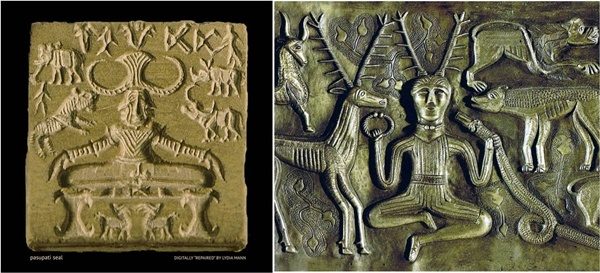
Pashupati and Cernunnos
5. Sacrifice of the Bull Son
Throughout the countries of the Bull Cult it was traditional to sacrifice live bulls that represented the Bull Son on strategic days of the years. Perhaps the most efficacious day was the Spring Equinox, when the blood of sacrificed bulls soaked the ground and the animals’ special power fertilized all the land, thus ensuring an abundant growing season. Sacrifice of live bulls representing the Bull Son was observed by the Celtic Druids, the Greeks, the Anatolians, the Persians and the Yezidis.
6. Holy Communion of Red Wine & Bull Meat
Possibly the first form of Holy Communion occurred within the Bull Cult as the consumption of bull meat and red wine that followed the ceremonial sacrifice of live bulls. This sacred meal was consumed on Crete and Greece in order to unite with the Divine Son Zageus-Dionysus, as well as in Anatolia.
The Hindu Tantric rite of the 5Ms, during which forbidden meat and wine are consumed, appears to be a carryover from the Holy Communion observed during the time of the Bull Cult.
7. Veneration of the Swastika
The veneration and utilization of the symbol of the swastika occurred in many countries of the Bull Cult, including India, Greece, Persia, Mesopotamia, Britain, Italy, Scandinavia and many of the countries in Africa and the Western Hemisphere. The symbol has a special association with time and cycles.
The symbol of the swastika has as its foundation a cross, the symbol of life, to which are joined four short horizontal lines at a ninety degree angle to give the swastika the appearance of a propeller. It thus signifies the cyclic movement of life, while its four equal parts denote the four cyclic ages known in Hinduism as the four Yugas and in Greece are the four ages.
During the time of the Bull Cult, astronomers could watch a celestial swastika being created in the night sky by the movement of the Big Dipper or Great Bear as it slowly moved around the center of the sky while its four predominant celestial positions predicted the annual cycle of four seasons on Earth.
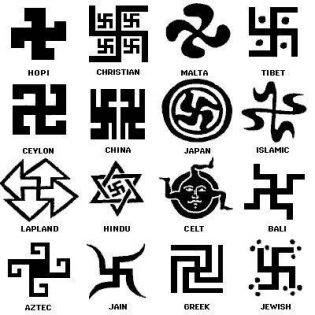
Besides possessing a giant swastika on one of its slopes, Mount Kailash, the “Swastika Mountain,” may have been the North Pole of the Earth during the Bull Cult and therefore sat right under the celestial swastika as it was being formed above. In this regard, Mt Kailash has been associated with mythical Mount Meru, the giant mountain that was once at the North Pole and sat in the center of the world while uniting Heaven and Earth.
Disclaimer: The views expressed here are solely of the author. My India My Glory does not assume any responsibility for the validity or information shared in this article by the author.

